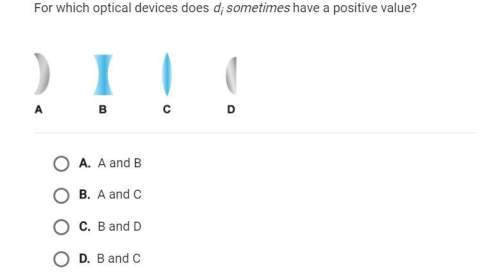
Physics, 06.08.2021 04:50 dmccray3357
Randall is able to paddle his canoe at 2.0 m/s in still water. He drops the canoe into a river which is flowing north at 1.5 m/s . Draw sketches showing how to determine the direction of the magnitude and direction of the velocity of the canoe relative to the Earth using vector addition: no need for drawing

Answers: 2


Another question on Physics

Physics, 22.06.2019 12:50
Arunner is jogging at a steady 3.6 km/hr. when the runner is 2.9 km from the finish line, a bird begins flying from the runner to the finish line at 14.4 km/hr (4 times as fast as the runner). when the bird reaches the finish line, it turns around and flies back to the runner. even though the bird is a dodo, we will assume that it occupies only one point in space, i.e., a zero-length bird. how far does the bird travel? (b) after this first encounter, the bird then turns around and flies from the runner back to the finish line, turns around again and flies back to the runner. the bird repeats the back and forth trips until the runner reaches the finish line. how far does the bird travel from the beginning? (i.e. include the distance traveled to the first encounter)
Answers: 2

Physics, 22.06.2019 13:30
Which is not an example of how an object gains elastic potential energy by stretching? a. jumping on a pogo stick b. pulling on a rubber band c. jumping on a trampoline
Answers: 1

Physics, 22.06.2019 21:00
On a mild saturday morning while people are working inside, the furnace keeps the temperature inside the building at 23degreesc. at noon the furnace is turned off, and the people go home. the temperature outside is a constant 16degreesc for the rest of the afternoon. if the time constant for the building is 3 hr, when will the temperature inside the building reach 18degreesc? if some windows are left open and the time constant drops to 2 hr, when will the temperature inside reach 18degreesc?
Answers: 3

Physics, 22.06.2019 21:40
Wo small variable-thrust jets are actuated to keep the spacecraft angular velocity about the z-axis constant at ? 0 = 1.16 rad/s as the two telescoping booms are extended from r1 = 1.18 m to r2 = 4.69 m at a constant rate over a period of 124 seconds. the small 19-kg experiment modules at the ends of the booms may be treated as particles, and the mass of the rigid booms is negligible. determine the necessary thrust t for each jet as a function of time where t = 0 is the time when the telescoping action is begun. after you have the general expression for t, answer the questions. show work.
Answers: 1
You know the right answer?
Randall is able to paddle his canoe at 2.0 m/s in still water. He drops the canoe into a river which...
Questions








Arts, 19.12.2019 14:31

English, 19.12.2019 14:31

Mathematics, 19.12.2019 14:31



Biology, 19.12.2019 14:31


Computers and Technology, 19.12.2019 14:31



Spanish, 19.12.2019 14:31


English, 19.12.2019 14:31




